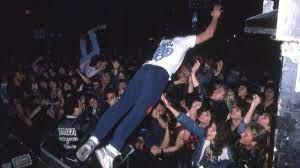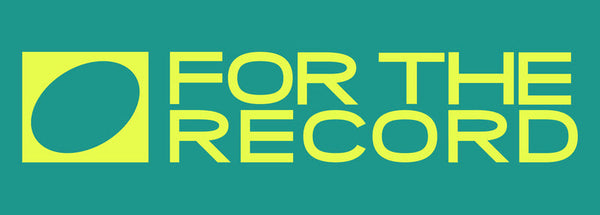
Let's Talk About It: The Music Scene in 1990s Brooklyn
Share
The Brooklyn music scene in the 1990s was a vibrant and diverse community that produced some of the most exciting and influential music of the decade. From indie rock and punk to hip-hop and electronic music, Brooklyn was home to a wide range of artists who were pushing the boundaries of their respective genres.
One of the defining characteristics of the Brooklyn music scene in the 1990s was its DIY ethos. Many of the musicians and bands in the scene were self-taught and self-funded, and they often relied on word-of-mouth promotion and grassroots organizing to get their music out to audiences. This spirit of independence and experimentation helped create a unique and dynamic music scene that was both collaborative and competitive.
One of the most important venues in the Brooklyn music scene during this time was the Williamsburg club, Northsix (later known as Music Hall of Williamsburg). The club hosted countless shows and concerts featuring local and national acts, and it quickly became a hub for the indie rock and punk scenes. Other important venues in the Brooklyn music scene during this time included CBGB's sister club, CB's 313 Gallery, and the Brooklyn Academy of Music.
The Brooklyn music scene in the 1990s was also notable for its diversity. Hip-hop was a major force in the scene, with artists like Mos Def, Talib Kweli, and the Wu-Tang Clan all emerging from the borough. The electronic music scene was also thriving, with acts like LCD Soundsystem and Autechre gaining a following. The punk and indie rock scenes were similarly diverse, with bands like Blonde Redhead, Les Savy Fav, and TV on the Radio all calling Brooklyn home.
Despite its importance and influence, the Brooklyn music scene of the 1990s was not without its challenges. Rising rents and gentrification forced many artists out of their homes and studios, and many of the venues that were central to the scene closed down. However, the legacy of the Brooklyn music scene of the 1990s continues to be felt today, with many of the artists and bands from that era going on to achieve critical and commercial success.
In conclusion, the Brooklyn music scene in the 1990s was a dynamic and diverse community that produced some of the most exciting and influential music of the decade. The scene was defined by its DIY ethos, its collaborative spirit, and its willingness to push the boundaries of established genres. While the scene faced its share of challenges, its legacy continues to be felt today, and it remains an important chapter in the history of American music.
One of the defining characteristics of the Brooklyn music scene in the 1990s was its DIY ethos. Many of the musicians and bands in the scene were self-taught and self-funded, and they often relied on word-of-mouth promotion and grassroots organizing to get their music out to audiences. This spirit of independence and experimentation helped create a unique and dynamic music scene that was both collaborative and competitive.
One of the most important venues in the Brooklyn music scene during this time was the Williamsburg club, Northsix (later known as Music Hall of Williamsburg). The club hosted countless shows and concerts featuring local and national acts, and it quickly became a hub for the indie rock and punk scenes. Other important venues in the Brooklyn music scene during this time included CBGB's sister club, CB's 313 Gallery, and the Brooklyn Academy of Music.
The Brooklyn music scene in the 1990s was also notable for its diversity. Hip-hop was a major force in the scene, with artists like Mos Def, Talib Kweli, and the Wu-Tang Clan all emerging from the borough. The electronic music scene was also thriving, with acts like LCD Soundsystem and Autechre gaining a following. The punk and indie rock scenes were similarly diverse, with bands like Blonde Redhead, Les Savy Fav, and TV on the Radio all calling Brooklyn home.
Despite its importance and influence, the Brooklyn music scene of the 1990s was not without its challenges. Rising rents and gentrification forced many artists out of their homes and studios, and many of the venues that were central to the scene closed down. However, the legacy of the Brooklyn music scene of the 1990s continues to be felt today, with many of the artists and bands from that era going on to achieve critical and commercial success.
In conclusion, the Brooklyn music scene in the 1990s was a dynamic and diverse community that produced some of the most exciting and influential music of the decade. The scene was defined by its DIY ethos, its collaborative spirit, and its willingness to push the boundaries of established genres. While the scene faced its share of challenges, its legacy continues to be felt today, and it remains an important chapter in the history of American music.
